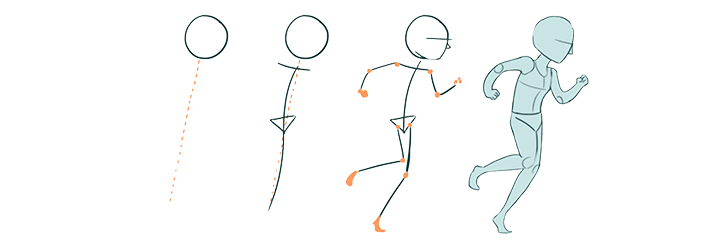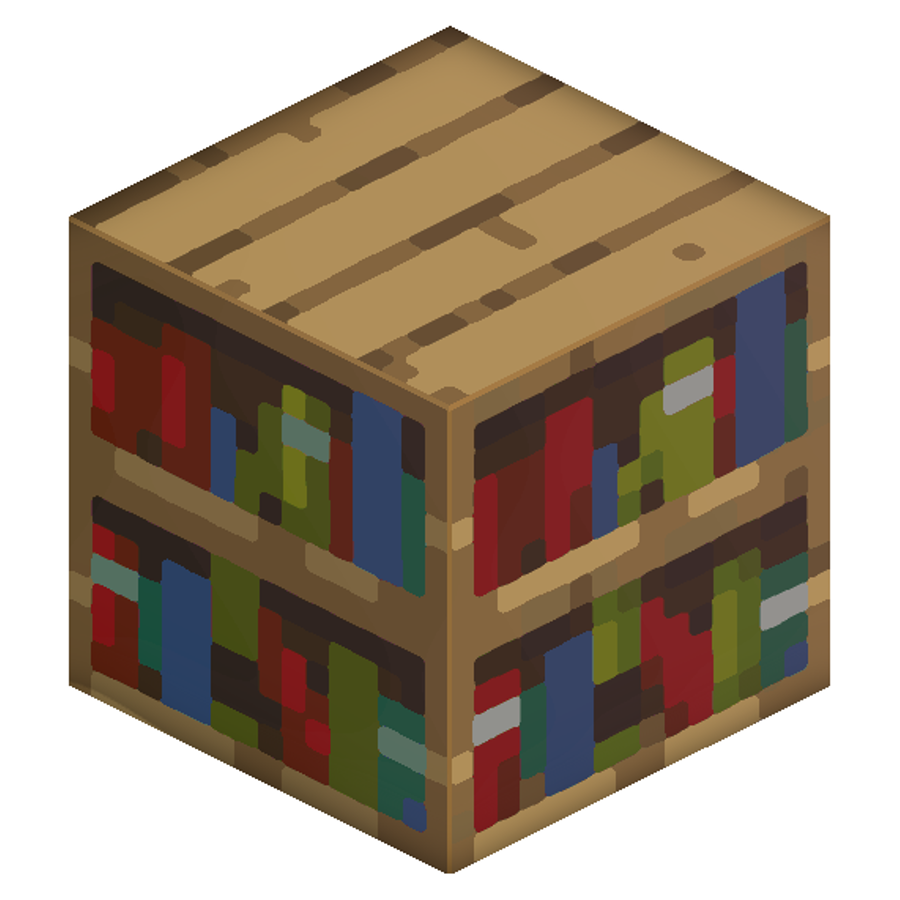🏃 Move#
#bs.move:help
Make your entity move exactly the way you want them to!

Important
This module limits the world size to 2,147,480 to prevent scoreboard overflow.
“There is nothing permanent except change.”
—Heraclitus
🔧 Functions#
You can find below all functions available in this module.
Canonical to local#
- #bs.move:canonical_to_local
Convert a canonical velocity (using the relative reference frame) into a local velocity (using the local reference frame).
- Inputs:
Execution
rotated as <entity>orrotated <h> <v>: Rotation used for the conversion.Scores
@s bs.vel.[x,y,z]: Velocity to convert.- Outputs:
Scores
@s bs.vel.[x,y,z]: Converted velocity.
Credits: Aksiome
Local to canonical#
- #bs.move:local_to_canonical
Convert a local velocity (using the local reference frame) into a canonical velocity (using the relative reference frame).
- Inputs:
Execution
rotated as <entity>orrotated <h> <v>: Rotation used for the conversion.Scores
@s bs.vel.[x,y,z]: Velocity to convert.- Outputs:
Scores
@s bs.vel.[x,y,z]: Converted velocity.
Credits: Aksiome
Set motion#
- #bs.move:set_motion_by_vel {scale:<scaling>}
Set the motion of an entity using velocity scores.
- Inputs:
Execution
as <entities>: Entity to move.Scores
@s bs.vel.[x,y,z]: Velocity vector.Macro Var
scale: Scalar for the function’s outputs.- Outputs:
State: Motion is applied to the given entity.
Move a pig by its velocity scores:
# Once
summon minecraft:pig ~ ~ ~
scoreboard players set @e[type=minecraft:pig] bs.vel.x 50
scoreboard players set @e[type=minecraft:pig] bs.vel.y 25
scoreboard players set @e[type=minecraft:pig] bs.vel.z 0
# In a loop
execute as @e[type=minecraft:pig] run function #bs.move:set_motion_by_vel {scale:0.001}
Credits: Aksiome
Teleport#
- #bs.move:tp_by_vel {scale:<scaling>,with:{}}
Teleport an entity by its velocity scores while handling collisions.
- Inputs:
Execution
as <entities>: Entity to move.Scores
@s bs.vel.[x,y,z]: Canonical velocity vector.Macro Var
scale: Scalar for the function’s outputs.Macro Var
with[compound]:blocks[bool]Whether the entity should collide with blocks (default: true).
entities[bool|string]Whether the entity should collide with entities (default: false). Can also be a tag that entities must have.
on_collision[string]Function run on collision (default:
#bs.move:on_collision/bounce).ignored_blocks[string]Blocks to ignore (default:
#bs.hitbox:intangible).ignored_entities[string]Entities to ignore (default:
#bs.hitbox:intangible).- Outputs:
State: Entity is teleported according to its velocity scores.
- #bs.move:tp_by_local_vel {scale:<scaling>,with:{}}
Teleport an entity by its velocity scores, using the local reference frame, while handling collisions.
- Inputs:
Execution
as <entities>: Entity to move.Scores
@s bs.vel.[x,y,z]: Local velocity vector.Macro Var
scale: Scalar for the function’s outputs.Macro Var
with[compound]:blocks[bool]Whether the entity should collide with blocks (default: true).
entities[bool|string]Whether the entity should collide with entities (default: false). Can also be a tag that entities must have.
on_collision[string]Function run on collision (default:
#bs.move:on_collision/bounce).ignored_blocks[string]Blocks to ignore (default:
#bs.hitbox:intangible).ignored_entities[string]Entities to ignore (default:
#bs.hitbox:intangible).- Outputs:
State: Entity is teleported according to its local velocity scores.
Move a cube (block_display) by its velocity scores (uses an interaction as the hitbox):
# Once
summon minecraft:block_display ~ ~ ~ {block_state:{Name:"stone"},teleport_duration:3,transformation:[1f,0f,0f,-0.5f,0f,1f,0f,0f,0f,0f,1f,-0.5f,0f,0f,0f,1f],Passengers:[{id:"minecraft:interaction",width:1f,height:1f}]}
scoreboard players set @e[type=minecraft:block_display] bs.vel.x 100
scoreboard players set @e[type=minecraft:block_display] bs.vel.y 20
scoreboard players set @e[type=minecraft:block_display] bs.vel.z 50
# In a loop
execute as @e[type=minecraft:block_display] run function #bs.move:tp_by_vel {scale:0.001,with:{}}
# Choose between multiple collision behaviors
execute as @e[type=minecraft:block_display] run function #bs.move:tp_by_vel {scale:0.001,with:{on_collision:"#bs.move:on_collision/bounce"}}
execute as @e[type=minecraft:block_display] run function #bs.move:tp_by_vel {scale:0.001,with:{on_collision:"#bs.move:on_collision/damped_bounce"}}
execute as @e[type=minecraft:block_display] run function #bs.move:tp_by_vel {scale:0.001,with:{on_collision:"#bs.move:on_collision/slide"}}
execute as @e[type=minecraft:block_display] run function #bs.move:tp_by_vel {scale:0.001,with:{on_collision:"#bs.move:on_collision/stick"}}
Performance tip
Although this system doesn’t set specific limits, it’s important to note that performance is influenced by both the speed and size of the entity.
Credits: Aksiome
🎓 Custom collisions#
This module allows you to customize collision behaviors according to your specific needs.
By modifying the on_collision input key, you have the freedom to specify the function that triggers upon collision. However, managing the resolution yourself can be quite challenging. This is why Bookshelf provides several predefined functions:
|
The entity will bounce on the collision surface. |
|
The entity speed is reduced by 2 on each bounce. |
|
The entity will stick and slide along the collision surface. |
|
The entity will stop and stick to the collision surface. |
How it works?#
The simplest collision resolution is to stop the movement.
#bs.move:on_collision/stick
# set all components to 0 to cancel the movement
execute store result score $move.vel_remaining.x bs.data run scoreboard players set @s bs.vel.x 0
execute store result score $move.vel_remaining.y bs.data run scoreboard players set @s bs.vel.y 0
execute store result score $move.vel_remaining.z bs.data run scoreboard players set @s bs.vel.z 0
For sliding, we need to cancel the velocity on the axis that was hit and continue traveling the remaining distance.
#bs.move:on_collision/slide
# set a component to 0 depending on the surface that was hit
execute if score $move.hit_face bs.data matches 4..5 store result score $move.vel_remaining.x bs.data run scoreboard players set @s bs.vel.x 0
execute if score $move.hit_face bs.data matches 0..1 store result score $move.vel_remaining.y bs.data run scoreboard players set @s bs.vel.y 0
execute if score $move.hit_face bs.data matches 2..3 store result score $move.vel_remaining.z bs.data run scoreboard players set @s bs.vel.z 0
To simplify the creation of these behaviors, there’s no need to handle a local velocity directly. The vector is automatically converted before and after the collision resolution. If you need help with custom collisions, you can ask us on our discord server!
💬 Did it help you?
Feel free to leave your questions and feedbacks below!
